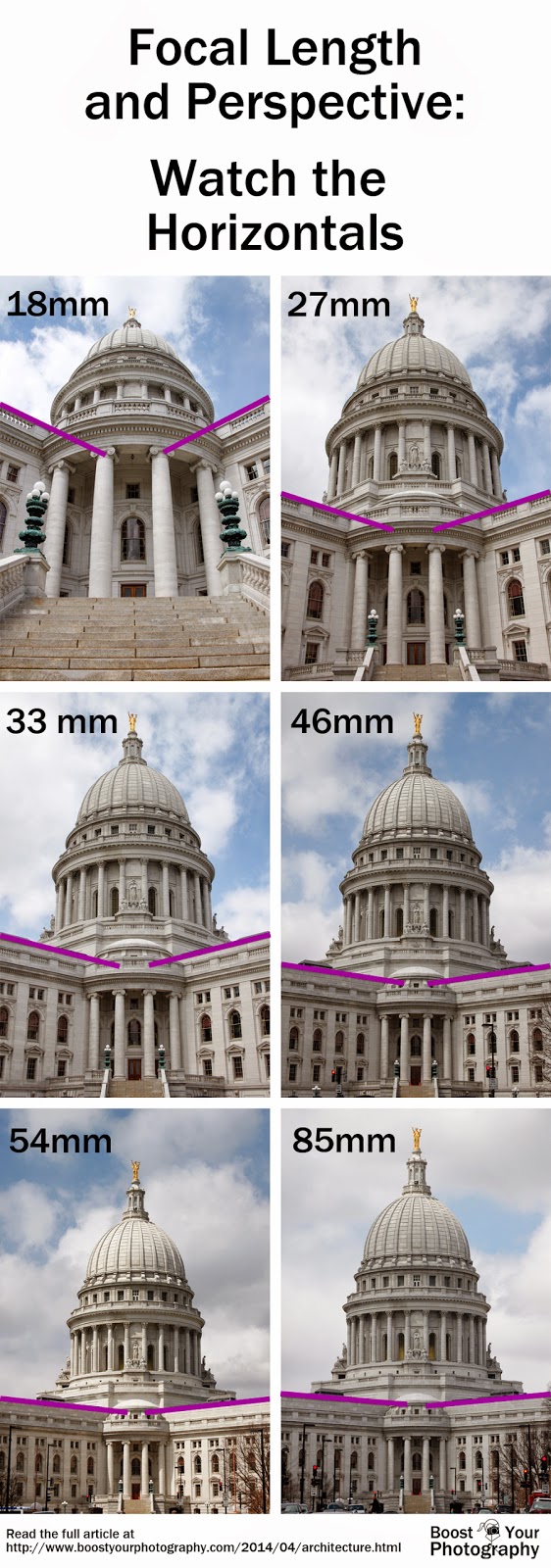Architecture is a famous images challenge, and one that may be explored each proper around you and whilst travelling. This put up will cover a common hassle in architecture snap shots: distortion due to attitude and the focal duration of your digital camera lens.

Problems with Perspective in Architecture
Perspective is critical in photography and perhaps no where more so than with architectural photographs. Our brains use perspective 'cues' in two-dimensional pieces, like photographs and paintings, in order to interpret the three-dimensional views represented. We are used to the idea that a road seems to get smaller as it fades off into the distance, even though we know that it is actually the same width all along. These vanishing points (the point either within or outside the image where the two lines of the road would converge) help us gauge distance and scale. But they can also be disconcerting when they create distortion in places where we expect lines to be straight.The quantity of distortion in a picture relies upon on the focal length of the lens used and on how near or far you are in your problem. In a previous article, Zooming vs. Cropping: attitude in photography, I supplied one series of examples about how focal length and movement can change and deform an photograph. Below is an structure example comparing zooming from the same area.

Here, I took extraordinary variations of the same photograph, whilst standing in the same vicinity. First, I took a extensive angle view at a focal period of 18 mm, after which I took a zoomed in view at a focal length of 110 mm. When you examine the Capitol between the 2 pictures, you'll notice that there's very little distinction in the images and their relative distortion. The troubles stand up while you begin shifting and converting your focal period collectively.
Converging Verticals
The road fading into the distance illustrated the idea of 'converging verticals' - that vertical lines in the image appear to be getting closer together rather than being straight up-and-down. While this can work well for roads, it is not always the effect you want with architecture. The graphic below demonstrates some examples of converging verticals at different focal lengths.
For this collection of photographs, I composed every photograph to include about the identical composition of the Capitol constructing. Then, on every occasion I changed focal lengths, I had to stroll farther away until I could get the same composition. Overall, I walked about town blocks between the nearest and farthest photographs.
The distortion of the converging verticals is most obvious at the wider focal lengths. Many photographers intentionally use extensive angle lenses to create this kind of big, overwhelming feeling of length via distortion. By the time you method 50 mm, the verticals have ordinarily straightened themselves out to present a extra 'practical' or preferred architectural view of the building.
Watch Your Horizontals, Too
The distortion from taking a photograph of a building from up close is not limited to converging verticals. Horizontal lines can also appear significantly exaggerated, depending on your lens and location.
Because the constructing wings are being photographed at an angle, they will in no way appear completely horizontal unless I moved to one side or the alternative and shot them face-on. Again, as with the vertical distortion, you want to be privy to the appearance that you are trying to seize and either use or avoid distortion as it fits your photographic imaginative and prescient.
When Photographing Architecture: watch your traces
The key lesson is to keep both horizontal and vertical distortion in mind when photographing and especially when capturing architecture. If you are looking to represent a building in an accurate, less-distorted way, then you need to think about using a longer focal length (over 50 mm at least) and standing much farther away to get the composition that you want.If you need, instead, to convey a sense of height or hovering proportions, then the usage of a wide attitude lens and getting as close in as possible will assist get that feeling throughout with the aid of utilizing vertical and horizontal distortion.
Neither photo is 'incorrect,' however you want to apply distortion deliberately, instead of just clicking a quick snapshot of a well-known landmark from up-near and then being disillusioned when it looks awkward or uncommon whilst you get domestic.
Want greater super thoughts? Follow Boost Your Photography on Pinterest: Boost Your Photography
No comments:
Post a Comment